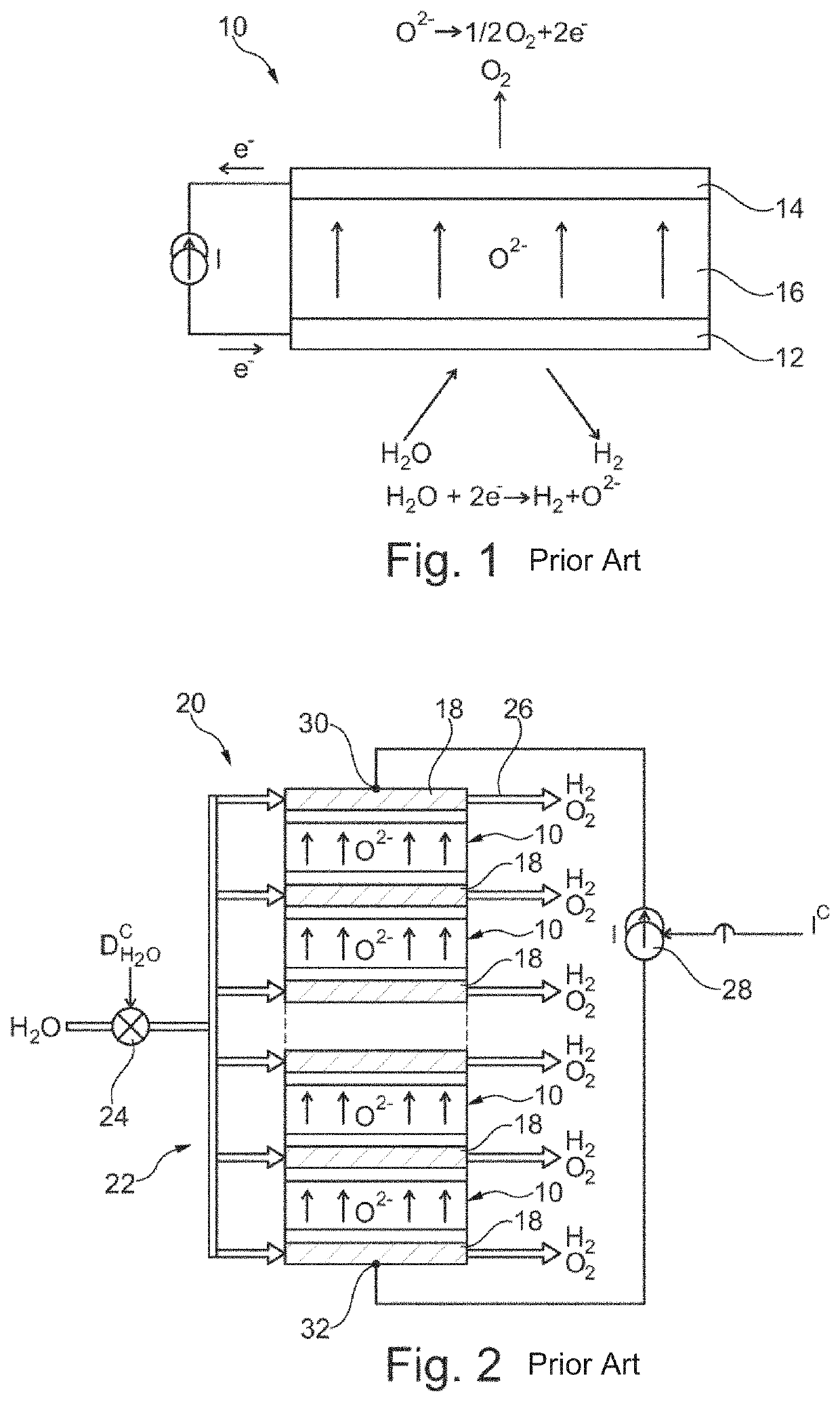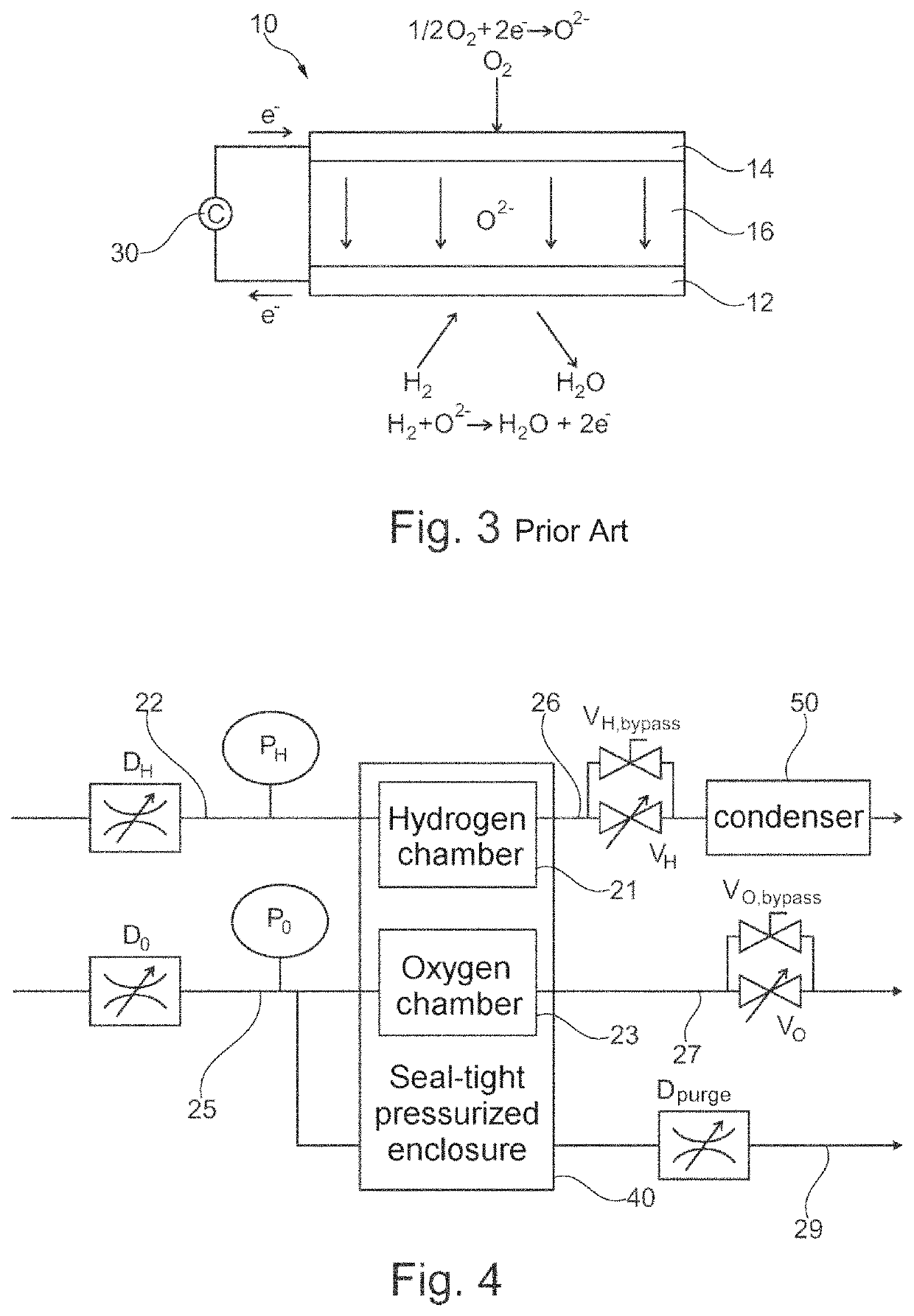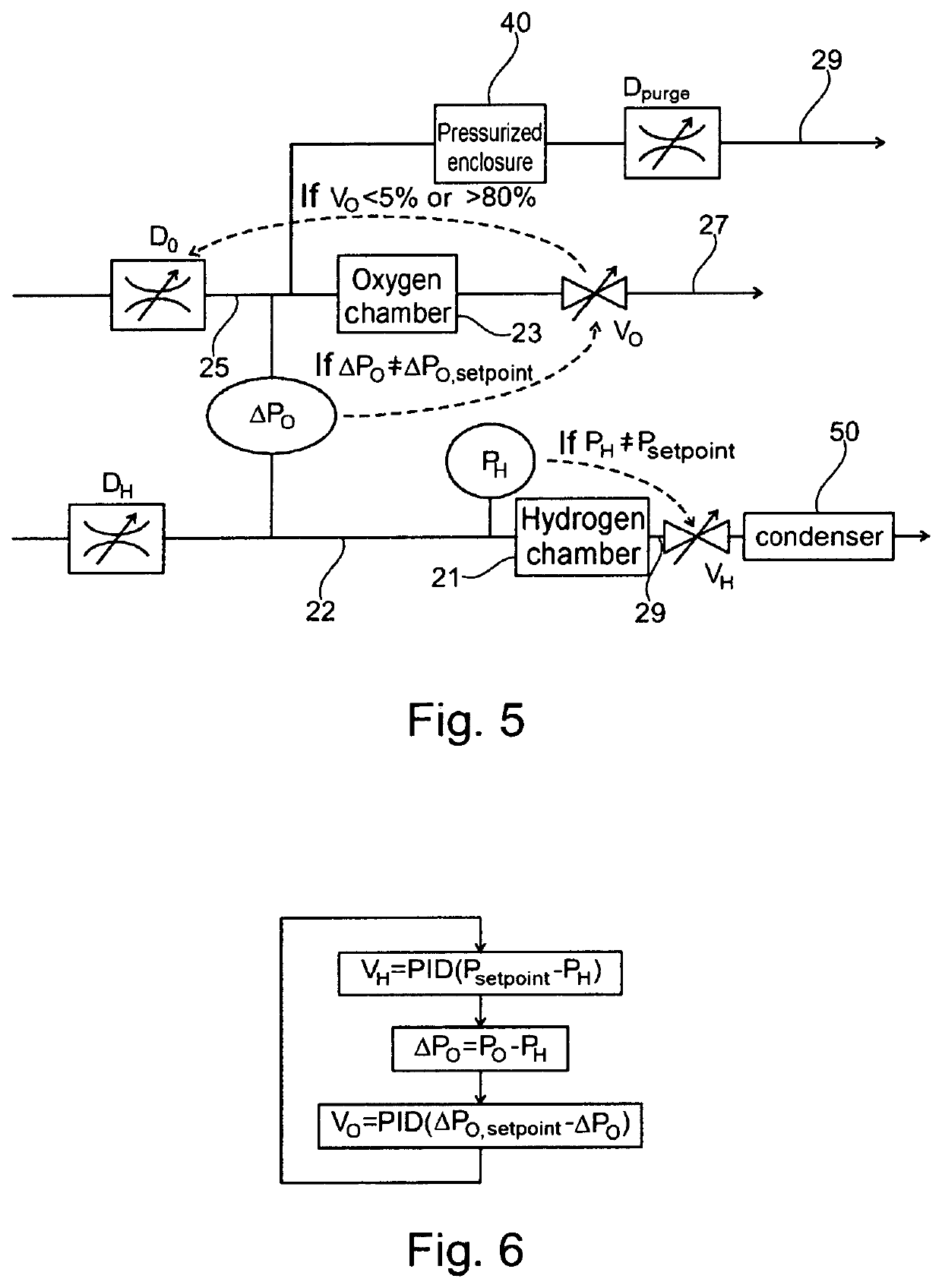Water electrolysis system (SOEC) or fuel cell (SOFC) operating under pressure in a tight enclosure with improved regulation
a water electrolysis system and fuel cell technology, applied in the direction of electrolysis components, electrolysis processes, electrochemical generators, etc., can solve the problems of not being able to achieve the solution that could be envisioned, the loss of some hydrogen production, and the difficulty of continuous operation
- Summary
- Abstract
- Description
- Claims
- Application Information
AI Technical Summary
Benefits of technology
Problems solved by technology
Method used
Image
Examples
Embodiment Construction
[0097]Other advantages and features of the invention will become more clearly apparent on reading the detailed description of examples of implementation of the invention, given by way of non-limiting illustration with reference to the following figures, in which:
[0098]FIG. 1 is a schematic view of an elementary electrochemical cell of an HTSE electrolyzer;
[0099]FIG. 2 is a schematic view of a stack of cells according to FIG. 1;
[0100]FIG. 3 is a schematic view of an electrochemical cell of an SOFC stack;
[0101]FIG. 4 is a schematic view of a system according to the invention comprising an HTE electrolyzer, the figure showing the flow-rate regulators and sensors required to regulate pressure in the flow chambers for steam and hydrogen and for oxygen and in the pressurized seal-tight enclosure that houses the chambers;
[0102]FIG. 5 is a schematic view of the flow-rate regulators and sensors with the automatic-control loops used to control the system according to FIG. 4 shown;
[0103]FIG. 6...
PUM
| Property | Measurement | Unit |
|---|---|---|
| temperature | aaaaa | aaaaa |
| temperature | aaaaa | aaaaa |
| temperatures | aaaaa | aaaaa |
Abstract
Description
Claims
Application Information
 Login to View More
Login to View More - R&D
- Intellectual Property
- Life Sciences
- Materials
- Tech Scout
- Unparalleled Data Quality
- Higher Quality Content
- 60% Fewer Hallucinations
Browse by: Latest US Patents, China's latest patents, Technical Efficacy Thesaurus, Application Domain, Technology Topic, Popular Technical Reports.
© 2025 PatSnap. All rights reserved.Legal|Privacy policy|Modern Slavery Act Transparency Statement|Sitemap|About US| Contact US: help@patsnap.com



